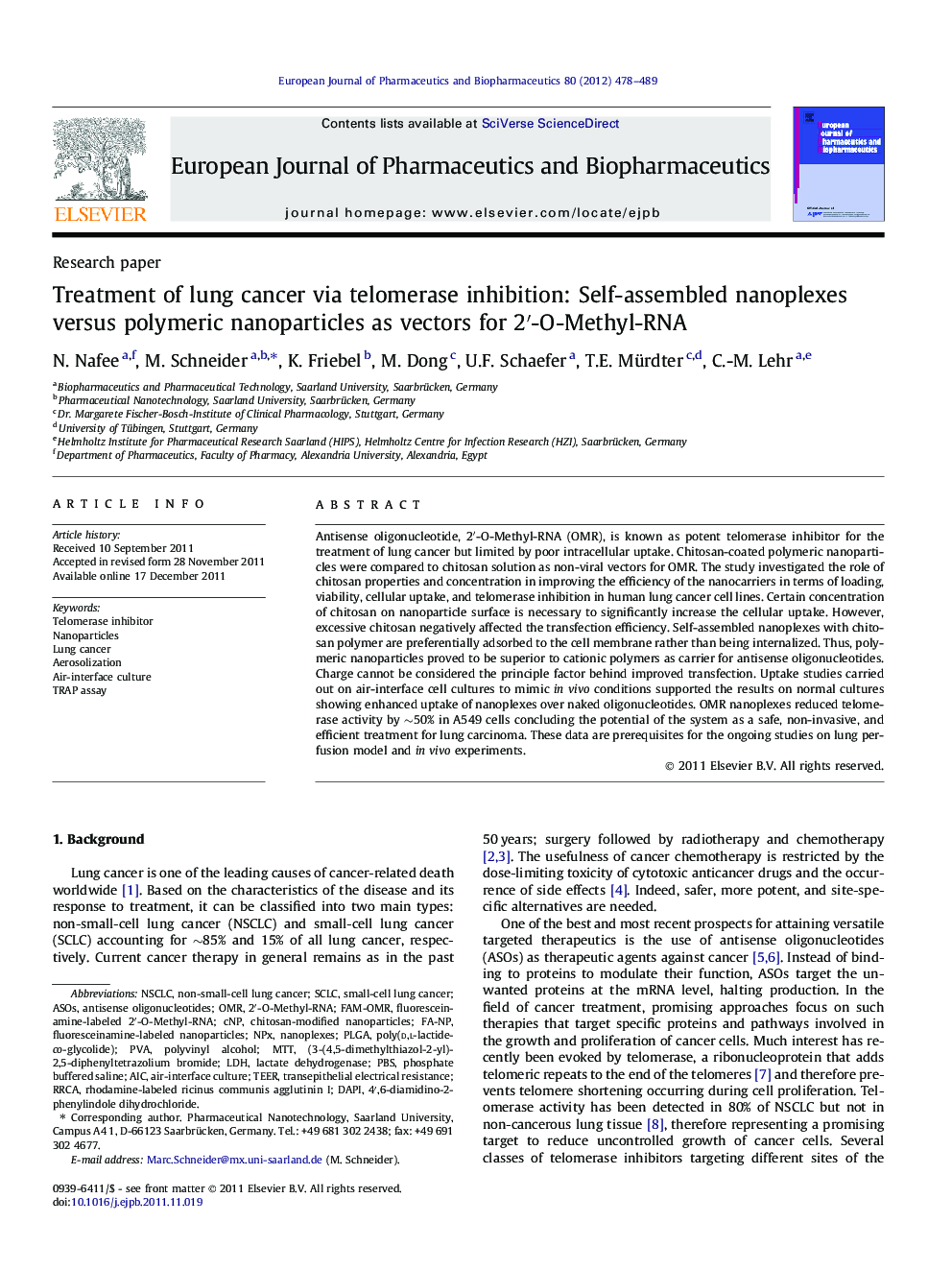| Article ID | Journal | Published Year | Pages | File Type |
|---|---|---|---|---|
| 2083875 | European Journal of Pharmaceutics and Biopharmaceutics | 2012 | 12 Pages |
Antisense oligonucleotide, 2′-O-Methyl-RNA (OMR), is known as potent telomerase inhibitor for the treatment of lung cancer but limited by poor intracellular uptake. Chitosan-coated polymeric nanoparticles were compared to chitosan solution as non-viral vectors for OMR. The study investigated the role of chitosan properties and concentration in improving the efficiency of the nanocarriers in terms of loading, viability, cellular uptake, and telomerase inhibition in human lung cancer cell lines. Certain concentration of chitosan on nanoparticle surface is necessary to significantly increase the cellular uptake. However, excessive chitosan negatively affected the transfection efficiency. Self-assembled nanoplexes with chitosan polymer are preferentially adsorbed to the cell membrane rather than being internalized. Thus, polymeric nanoparticles proved to be superior to cationic polymers as carrier for antisense oligonucleotides. Charge cannot be considered the principle factor behind improved transfection. Uptake studies carried out on air-interface cell cultures to mimic in vivo conditions supported the results on normal cultures showing enhanced uptake of nanoplexes over naked oligonucleotides. OMR nanoplexes reduced telomerase activity by ∼50% in A549 cells concluding the potential of the system as a safe, non-invasive, and efficient treatment for lung carcinoma. These data are prerequisites for the ongoing studies on lung perfusion model and in vivo experiments.
Graphical abstractThe treatment of lung cancer with telomerase inhibitors was recently introduced as intriguing approach. We demonstrate that the delivery of such inhibitors using polymeric nanoparticles is more efficient than the use of polymeric complexes. In addition, the uptake of the nanocarriers showed also a surface charge optimum. The treatment could also be transferred to an air-interface cultured model system better mimicking the in vivo situation.Figure optionsDownload full-size imageDownload high-quality image (199 K)Download as PowerPoint slide
